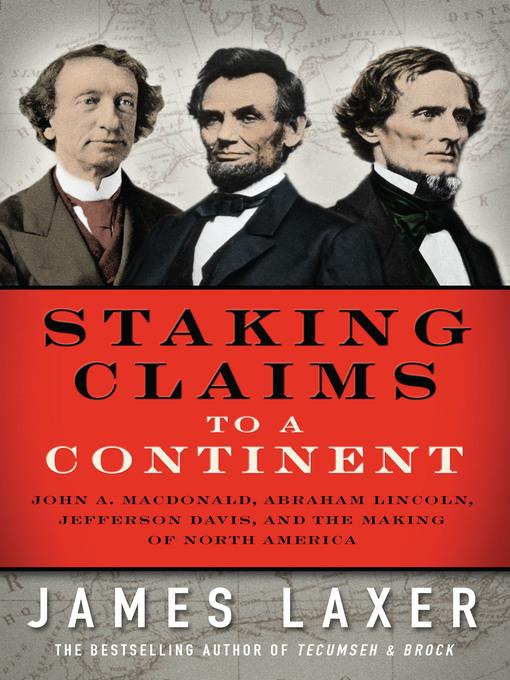
Staking Claims to a Continent
John A. Macdonald, Abraham Lincoln, Jefferson Davis, and the Making of North America
کتاب های مرتبط
- اطلاعات
- نقد و بررسی
- دیدگاه کاربران
نقد و بررسی

September 19, 2016
This second book in Laxer’s North American history trilogy (following Tecumseh and Brock), depicts a pivotal clash among a powerful triumvirate of men striving to shape the destiny of the United States and Canada. John A. Macdonald, Abraham Lincoln, and Jefferson Davis—leaders of Canada, the United States, and the Confederate States of America respectively—are shown here as individuals and also as players in the greater scope of their society and time. The book is fast-paced, full of people and governments that are frantic to position themselves to greatest advantage. Laxer gives a play-by-play of the events leading up to the American Civil War and Canadian Confederation, as well as aftershocks, such as the Red River Rebellion in Canada. This is a vast, formidable work by a writer with an imposing collection of historical and political writings to his name. Despite the abundant detail, the writing is lively and spiced up with quotes from primary sources, helping to make the book satisfying and intriguing while leaving readers with a fresh perspective on the men who set out to claim the continent. Agent: Jackie Kaiser, Westwood Creative Artists.

July 1, 2016
Three mid-19th-century leaders shape their countries' destinies.Prolific Canadian author Laxer (Political Science/York Univ.; Tecumseh and Brock: The War of 1812, 2012, etc.) contends that the election of Abraham Lincoln in 1860 launched three "nation state projects" in North America, attempts by a people who viewed themselves as cultural or ethnic nations to achieve formal statehood. He asserts that the United States then constituted two such nations, and the Civil War was an attempt by the Southern nation to gain statehood by splitting off from the federal Union, while the Northern nation ultimately aimed to reconstitute the Union as a single nation-state purged of slavery. At the same time, several of Britain's North American provinces were inspired to unite into the self-governing Dominion of Canada under the protective aegis of the British Empire. Most of the book is taken up with lightweight histories of Canada and the United States in the middle of the 19th century, narratives that draw heavily and uncritically on a handful of secondary sources. The chapters on Canadian confederation and the Red River Rebellion may prove interesting to American readers unfamiliar with the story, and Canadian readers may learn more about the run-up to the American Civil War, but the purpose of the book remains elusive. The concept that the antebellum Southern states constituted a cultural nation within a nation is hardly new, and the puzzle of what binds Canadians together as a nation is with us still. Attempting to unite his stories, Laxer contends that Canadian confederation was driven by a need for unified resistance to American domination or conquest, but he fails to marshal convincing evidence in support; it appears more likely to have been motivated by economic considerations, railroad interests, and dysfunctional government in the Province of Canada. History and biography lacking in intellectual curiosity or a coherent overarching concept.
COPYRIGHT(2016) Kirkus Reviews, ALL RIGHTS RESERVED.

























دیدگاه کاربران